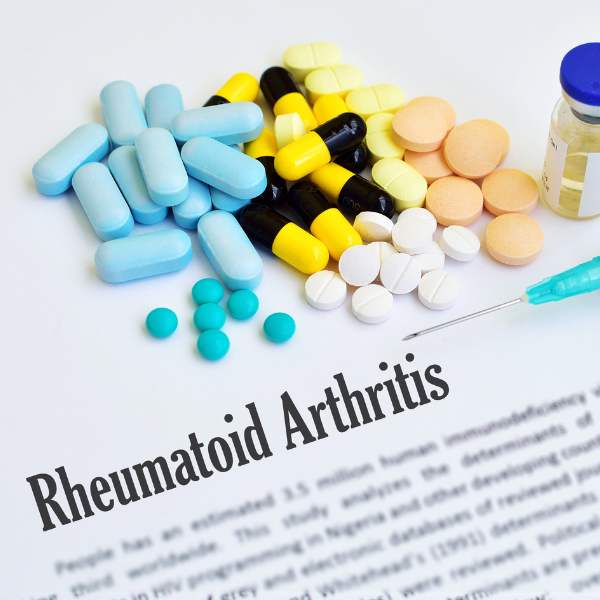Introduction
Rheumatoid arthritis (RA) is a chronic condition that affects approximately 1% of adults in the United States. While the exact pathophysiology of RA remains unclear, recent years have seen significant advancements in our understanding of the disease mechanisms leading to joint destruction.

The introduction of biologic response modifiers (BRMs), also known as biologic disease-modifying antirheumatic drugs (DMARDs), has revolutionized the approach to patient care in RA. However, the optimal place in therapy for each BRM is still being determined as new data continue to emerge about their safety and efficacy.
It’s important to note that while BRMs often show greater efficacy than traditional DMARDs, they are expensive, and long-term safety data are still limited. This means that the usual approach to patient care hasn’t changed dramatically yet.
Pathophysiology of Rheumatoid Arthritis
The Role of Cytokines
In a healthy joint, there’s a balance between pro-inflammatory and anti-inflammatory cytokines. However, in RA, an excess of pro-inflammatory cytokines disrupts this balance, leading to inflammation. Key players in this process include:
- Pro-inflammatory cytokines: Interleukin (IL)-1, IL-6, IL-7, and tumor necrosis factor (TNF)
- Anti-inflammatory cytokines: IL-4 and IL-10
Interleukin-6 (IL-6)
IL-6 is perhaps the most abundant cytokine in the synovium of RA patients. It stimulates the production of acute-phase reactants from the liver, osteoclasts, T lymphocytes, B lymphocytes, and platelets from megakaryocytes. Higher levels of IL-6 in the serum correlate with greater disease activity in RA. Interestingly, IL-6 also plays a crucial role in causing anemia of chronic disease, also known as anemia of inflammation.
Interleukin-7 (IL-7)
IL-7, a cytokine in the IL-2/IL-15 family, is expressed at high concentrations in the synovium of RA patients. It’s responsible for bone destruction by inducing osteoclastic cytokine production by T lymphocytes. IL-7 also stimulates the proliferation of T lymphocytes.
The Role of T Lymphocytes
T lymphocytes make up about 30% to 50% of the lymphocytes in the synovium of RA patients. They require two signals for full activation:
- Presentation of an antigen by the antigen-presenting cell to the T-cell receptor
- Binding of CD28 (a surface protein on T lymphocytes) with CD80/CD86 on the antigen-presenting cell
Once activated, T cells release inflammatory cytokines, matrix metalloproteinases, osteoclasts, and B lymphocytes, ultimately resulting in joint and bone damage.
The Role of B Lymphocytes
B lymphocytes contribute to the pathogenesis of RA in three primary ways:
- Producing autoantibodies, including rheumatoid factor (RF) and antibodies to cyclic citrullinated peptide (CCP)
- Activating T lymphocytes
- Stimulating the release of cytokines IL-1, IL-6, TNF, and IL-10
The presence of RF and anti-CCP antibodies is associated with more aggressive disease and poorer outcomes. Interestingly, anti-CCP antibodies may be detected years before the disease is diagnosed and are present in about 60% of RA patients.
Conclusion
Understanding the complex pathophysiology of RA is crucial for developing effective treatments. As research continues, we’re gaining more insights into the intricate interplay of cytokines, T lymphocytes, and B lymphocytes in the progression of this disease. This knowledge is paving the way for more targeted therapies, offering hope for better management of RA in the future.


